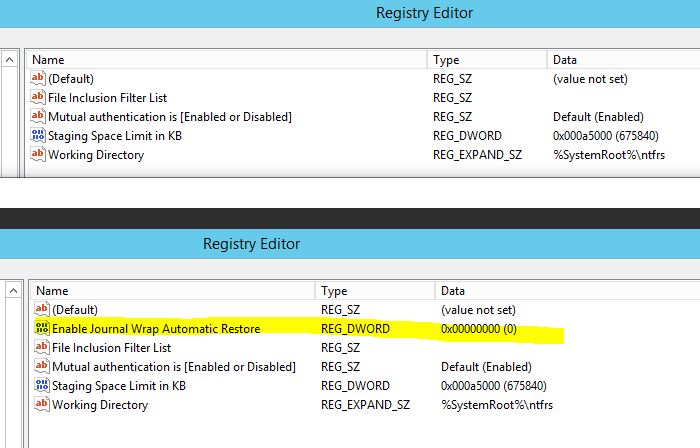
Hello @Gary Babin ,
Thank you for posting here.
Here are the answers for your references.
1) Can I ignore this FRSDiag report and proceed to DFS?
A1: Check if AD environment is healthy now. If so, you can ignore this FRSDiag report and proceed to DFSR from FRS.
Here are the steps to check AD health:
1.Check all DCs in this domain is working fine by running Dcdiag /v.
2.Check if AD replication works properly by running commands below on PDC.
repadmin /syncall /AdeP >c:\rep1.txt
repadmin /showrepl >c:\rep2.txt
repadmin /replsum >c:\rep3.txt
repadmin /showrepl * /csv >c:\repsum.csv
3.Had better back up all domain controllers and should back up SYSVOL folder.
4.Check both SYSVOL folder and Netlogon folder are shared by running net share on each DC.
5.Check we can update gpupdate /force on each DC successfully.
2) Should I delete the extra registry entries entirely? That might cause FRSDiag to be completely happy with these two DCs.
A2: Based on my knowledge and search, we can keep the extra registry entries and do not need to delete the registry.
For more information about Journal Wrap Errors, we can refer to links below.
[Solved] NTFRS – Journal Wrap Errors detected on Domain Controller
http://www.squidworks.net/2011/09/ntfrs-journal-wrap-errors-detected-on-domain-controller/
Enable Journal Wrap Automatic Restore
https://wintelteams.wordpress.com/2018/03/19/enable-journal-wrap-automatic-restore/
Please note: Information posted in the given link is hosted by a third party. Microsoft does not guarantee the accuracy and effectiveness of information.
For more information about migration from FRS to DFSR, we can refer to link below.
qUICKLY Explained: Migrate Your SYSVOL Replication from FRS to DFSR
https://blogs.technet.microsoft.com/qzaidi/2012/01/16/quickly-explained-migrate-your-sysvol-replication-from-frs-to-dfsr/
Streamlined Migration of FRS to DFSR SYSVOL
https://techcommunity.microsoft.com/t5/storage-at-microsoft/streamlined-migration-of-frs-to-dfsr-sysvol/ba-p/425405
Hope the information above is helpful.
Should you have any question or concern, please feel free to let us know.
Tip: It is recommended to test the FRS migration process in a similar test environment. If there is no problem in the test environment, then migrate in the production environment.
Best Regards,
Daisy Zhou
============================================
If the Answer is helpful, please click "Accept Answer" and upvote it.

